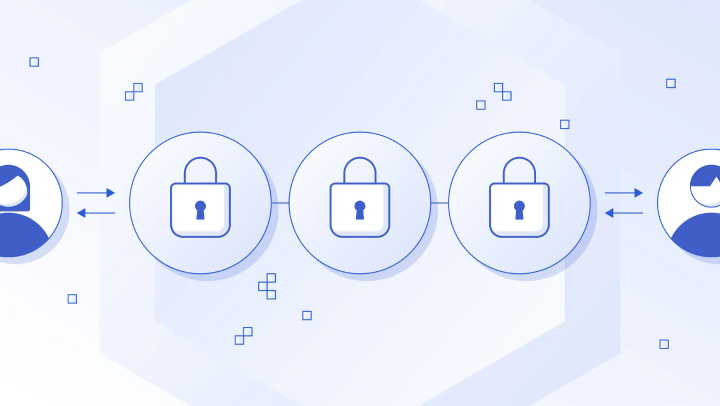What Is a Dynamic NFT (dNFT)?
A dynamic NFT (dNFT) is a Non-Fungible Token (NFT) with encoded smart contract logic that enables it to automatically change its metadata based on external conditions.
After achieving widespread adoption throughout the Web3 community, Non-Fungible Tokens (NFTs) are making their way into the mainstream, with spotlights in major media outlets and a series of high-profile athletes and public figures launching their own collections. As a result, NFTs have become one of the most publicly prominent applications of blockchain technology.
The next step in the evolution of NFTs is just getting started. Dynamic NFTs (dNFTs) are expanding the design space that NFTs are able to address through their ability to adapt and change in response to external events and data. In this article, we cover what NFTs are and how dNFTs are taking them to the next level, current and potential dNFT use cases, and how Chainlink can be leveraged by those looking to build dNFTs to give them access to trust-minimized off-chain data and computation.
What Is an NFT?
In a nutshell, NFTs are unique digital objects that exist on a blockchain. Every NFT can be differentiated from another through a 1-of-1 tokenID and its unique contract address. From there, metadata such as images, video files, or other data can be attached, meaning that it’s possible to own a token that represents a unique digital object.
The most common NFT use case is currently digital art; an artist mints a token representing a digital artwork and a collector can purchase that token, marking their ownership. Once NFTs are minted, their tokenIDs don’t change. Keep in mind that ascribing metadata, which incorporates an NFT’s description, image, and more is completely optional. In its most bare-bones form, an NFT is simply a transferable token that has a unique tokenID.
This static NFT model provides a host of benefits for digital artists around the world. Beforehand, digital artists were unable to stop, or even track, unauthorized distribution of their original artwork, because there was no means by which to distinguish the difference between any two files and therefore no single authentic file that could be owned. For the first time in the history of the Internet, creators can sell digital art to their fans by giving them verifiable ownership, while fans can prove that they own an original artwork even if the underlying image is copied.
Static NFTs Vs. Dynamic NFTs (dNFTs)
Static NFTs are currently the most common type of NFT, used for the most part by NFT art projects and play-to-earn game projects and as digital collectibles. Beyond these use cases, they also offer a unique value proposition for digitizing items in the real world, such as real estate deeds, patents, and other unique identifiers.
However, this model is limited by the permanence of static NFTs, because the metadata attached to them is fixed once they’re minted on a blockchain. Use cases such as tokenizing real-world assets, building progression-based video games, or creating blockchain-based fantasy sports leagues often require data to be updated. dNFTs offer a best-of-both-worlds approach, with NFTs retaining their unique identifiers while able to update aspects of their metadata.
Put simply, a dynamic NFT is an NFT that can change based on external conditions. Change in a dynamic NFT often refers to changes in the NFT’s metadata triggered by a smart contract. This is done by encoding automatic changes within the NFT smart contract, which provides instructions to the underlying NFT regarding when and how its metadata should change.

Dynamic elements besides metadata changes can also exist. For example, dynamic NFTs can be minted based on certain conditions, such as when a hidden spot is found in an augmented reality application. Dynamic NFTs can also house “hidden traits” manifested through user interactions instead of within the metadata. As fully unique and customizable tokens, NFTs can be programmed in an infinite number of ways. However, most dynamic NFTs must implement some form of metadata change in order for non-technical users to “see” the changes.
How Does a Dynamic NFT Work?
At a high level, building a dynamic NFT requires three things:
- An NFT smart contract built on the ERC-721 or ERC-1155 token standard, or an alternative standard on another blockchain that works similarly.
- The ability to connect to external data, often through a blockchain oracle service such as Chainlink.
- The ability to automatically trigger NFT metadata changes based on predefined conditions, often using an automation service such as Chainlink Automation.
By combining these core elements together, developers can build dynamically updating NFTs that trigger automatically based on predefined data parameters, providing new levels of engagement and functionality to previously static NFTs.
Dynamic NFT Use Cases
NFT metadata is where the token’s name is specified, traits are assigned, and file links are placed. While the tokenID provides a permanent identifier for verifiable ownership, the metadata is the essence of the NFT—housing the elements that make it useful. Below are a few examples of dynamic NFT use cases.
Generative Art NFTs and Games
Generative NFT art and collectible NFT projects often have a variety of traits, with some rarer than others. These traits are placed within an NFT’s metadata alongside an IPFS link to an image or video that corresponds to the NFT’s traits. In a dNFT, these traits change based on external conditions.
This functionality can be useful for character progression—a core tenet of many different game models—in blockchain games. When first starting a game with a playable NFT character, the NFT has base stats reflected in its metadata. As the player continues leveling up, the metadata in the NFT changes to reflect the character’s growth.

Real-World Asset Tokenization
Another case where metadata changes are useful is in the tokenization of real-world assets, where a host of changing metrics are often required. For example, an NFT representing a property could reflect its maintenance history, age, market value, and more. Tokenizing these changing assets therefore requires NFTs which have the ability to update with changing metadata.

These are just a few hypothetical use cases for dNFTs. In reality, changes to a dNFT’s metadata can be triggered by any number of off-chain or on-chain events, speaking to the limitless potential of dNFTs have for expanding the NFT design space.
While the current Web3 ecosystem mostly consists of static NFTs, a few standout projects have already kickstarted dNFT innovation.
LaMelo Ball NFTs
In the past year, professional sports players such as LaMelo Ball—a rising star in the NBA—have created pioneering dNFTs that leverage Chainlink Sports Data Feeds to redefine player-fan relationships.
There are currently eight different LaMelo Ball NFTs, with each NFT recording a different set of LaMelo’s player statistics, from rebounds and assists to points scored. NFT holders can receive special access to raffles and other NFT-specific perks based on LaMelo’s ongoing performance.
One of these eight NFTs, the Gold Evolve NFT, came with a unique promise: If LaMelo Ball won Rookie of the Year for the 2021 NBA season, the NFT itself would evolve to reflect a new image. LaMelo won the award and the NFT evolved.
LaMelo Ball NFTs are a prime example of dNFTs that change continuously based on external data. In this case, LaMelo’s player statistics are constantly updated on-chain within the NFT and can trigger display upgrades, rewards, and more.
Regenerative Resources Short Film NFTs
Regenerative Resources (RRC) is an ecosystem services company that aims to transform degraded land into productive seawater landscapes.
RRC announced that it will launch five dynamic Short Film NFTs designed by prominent artists, the funds from which will be used to seed and grow 100 million mangroves across RRC’s current projects.
Each Short Film NFT will initially have only a single frame. However, every time an NFT is bought or resold, more frames will be released in a continuous process until the NFT holder can view the entire short film.
How Chainlink Supports dNFTs
An often overlooked component of dNFT design is how to reliably source the information and functionality needed to build a secure, fair, and automated dNFT process.
As mentioned above, dynamic NFT metadata changes can be triggered in numerous ways based on external conditions. These conditions can exist both on and off-chain. However, blockchains are inherently unable to access off-chain data and computation.
Chainlink enables these limitations to be overcome by providing various off-chain data and computation services that can be used as inputs to trigger dNFT updates. As the dNFT ecosystem expands and NFTs become more heavily integrated with the real world, Chainlink acts as a bridge between the two disconnected worlds, enabling automated, decentralized, and engaging dNFT processes to be built.
Chainlink Data Feeds and Any API
Chainlink Data Feeds is an off-chain data delivery service that can securely deliver sports results, weather readings, or any other kind of data to be used to update a dNFT. For data offerings that are unique to a project, Chainlink also enables seamless connections between any API and an NFT smart contract through Chainlink Any API.
This service is mission-critical for use cases like LaMelo Ball dNFTs, which require on-chain sports data to trigger metadata changes. However, this is one of a limitless number of potential uses. As the most widely used decentralized oracle network, Chainlink is positioned to provide off-chain data to any dNFT that uses real-world data.
Chainlink Automation
Chainlink Automation is a secure smart contract automation service that can be used to trigger dynamic NFT changes when predefined conditions are met; to trigger visual changes in La Melo Ball NFTs when he reaches a certain stat threshold, such as 1000 points scored, for example.
Chainlink Automation provides an easy path to building truly autonomous and decentralized NFT processes and help ensure that user-owned dNFTs will work exactly as detailed. Combined with Chainlink Data Feeds and Any API, Chainlink Automation can enable the development of automated and engaging shopping rewards dNFT programs, eco-friendly behavioral tracking through dNFTs, and more.

Chainlink Verifiable Random Function (VRF)
Chainlink VRF is a verifiable RNG that can be used to jumpstart dynamic changes in a dNFT—a functionality that’s particularly relevant for GameFi projects. Randomness is integral to the vast majority of video games, used to determine the success rate of attacks, decide what items come out of a loot box, or even do something as granular as decide what color a character’s shirt will be after using a cloth dye, for example.
Because play-to-earn games carry real value, it’s absolutely crucial that the RNG mechanism they use is transparent and tamper-proof.
Bringing NFTs to Life
Chainlink provides the off-chain data and computation necessary to build next-generation dNFTs across a huge range of use cases, paving the way for dNFTs to achieve mainstream adoption.
As verifiably unique digital objects, NFTs give tangibility to the digital world—and dNFTs are a natural next step for furthering this paradigm shift.
For more about dynamic NFTs, check out these pieces:














